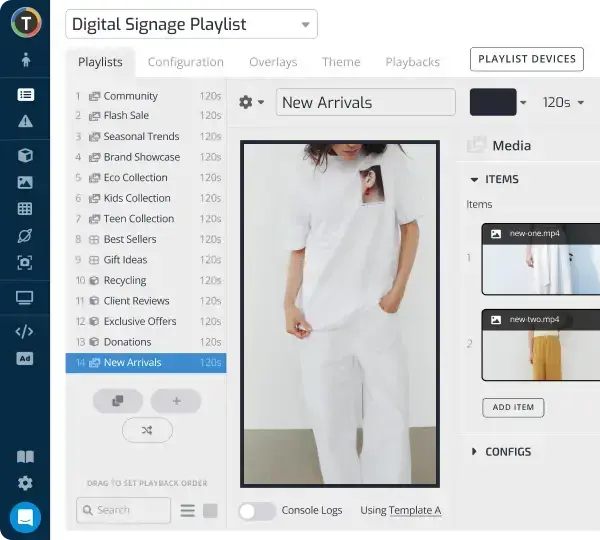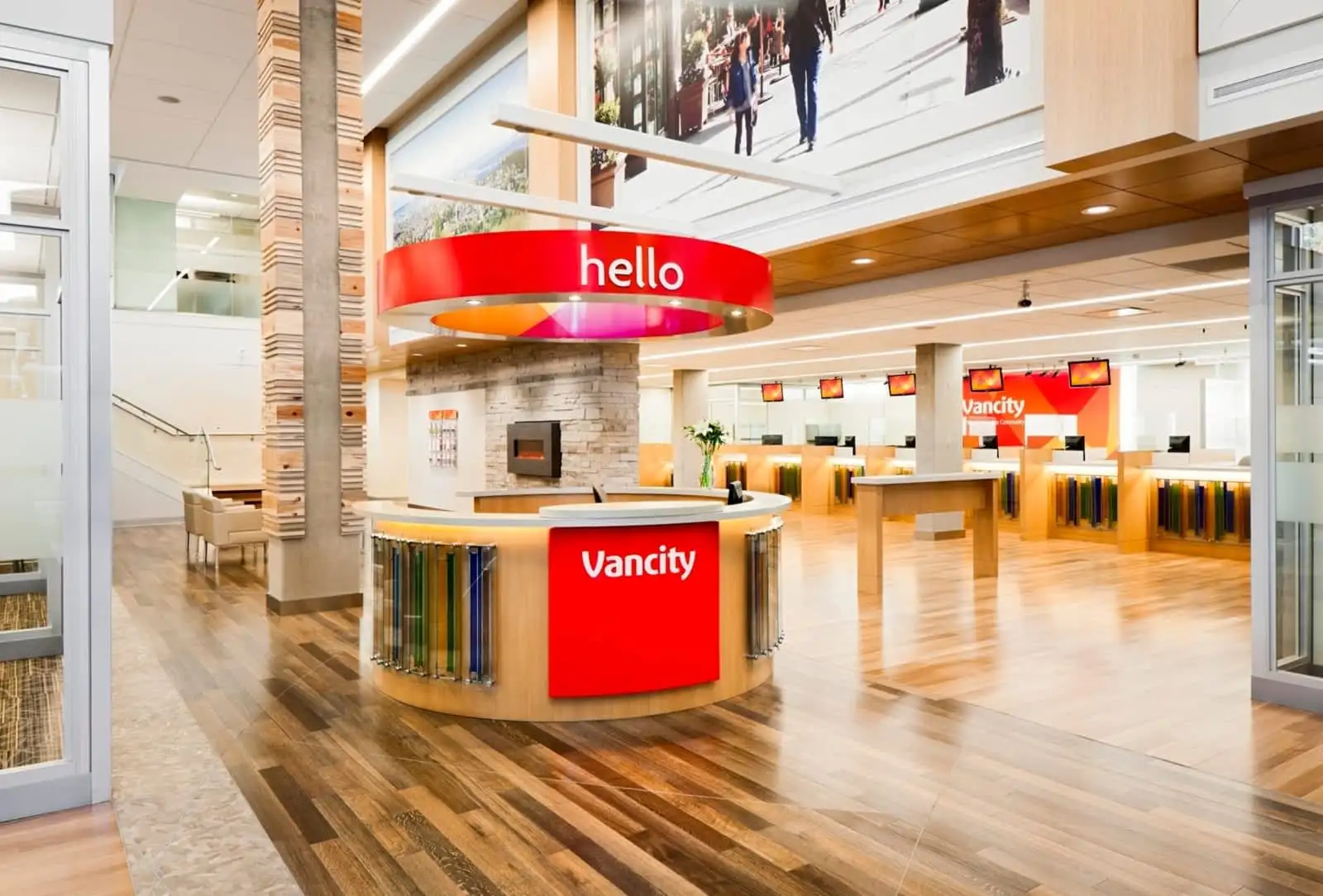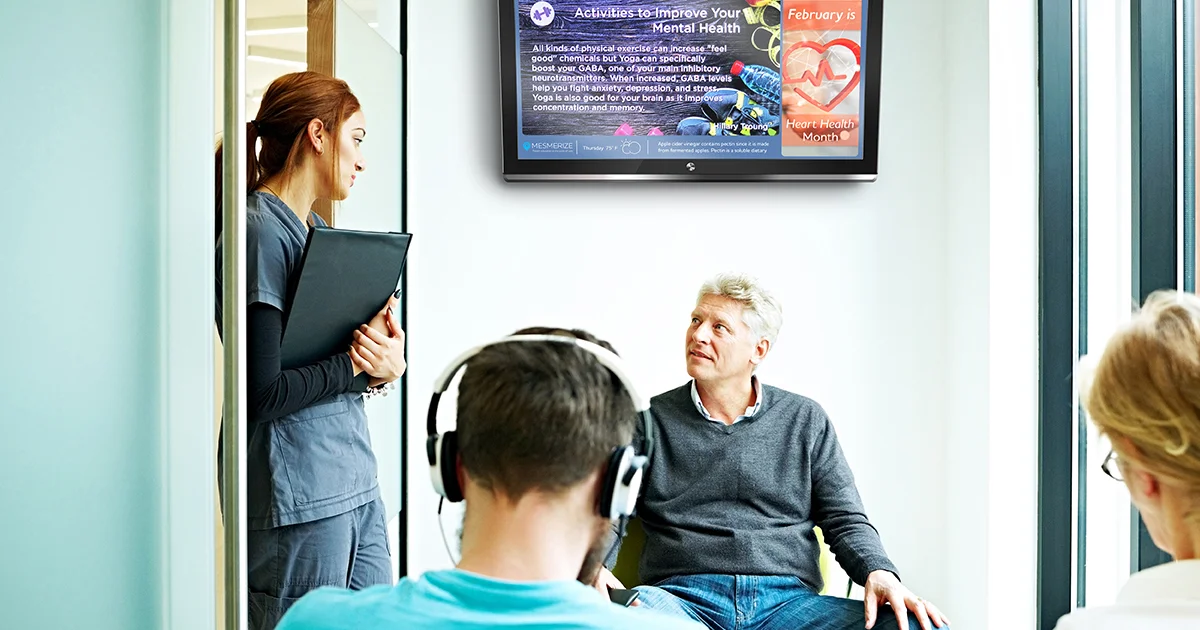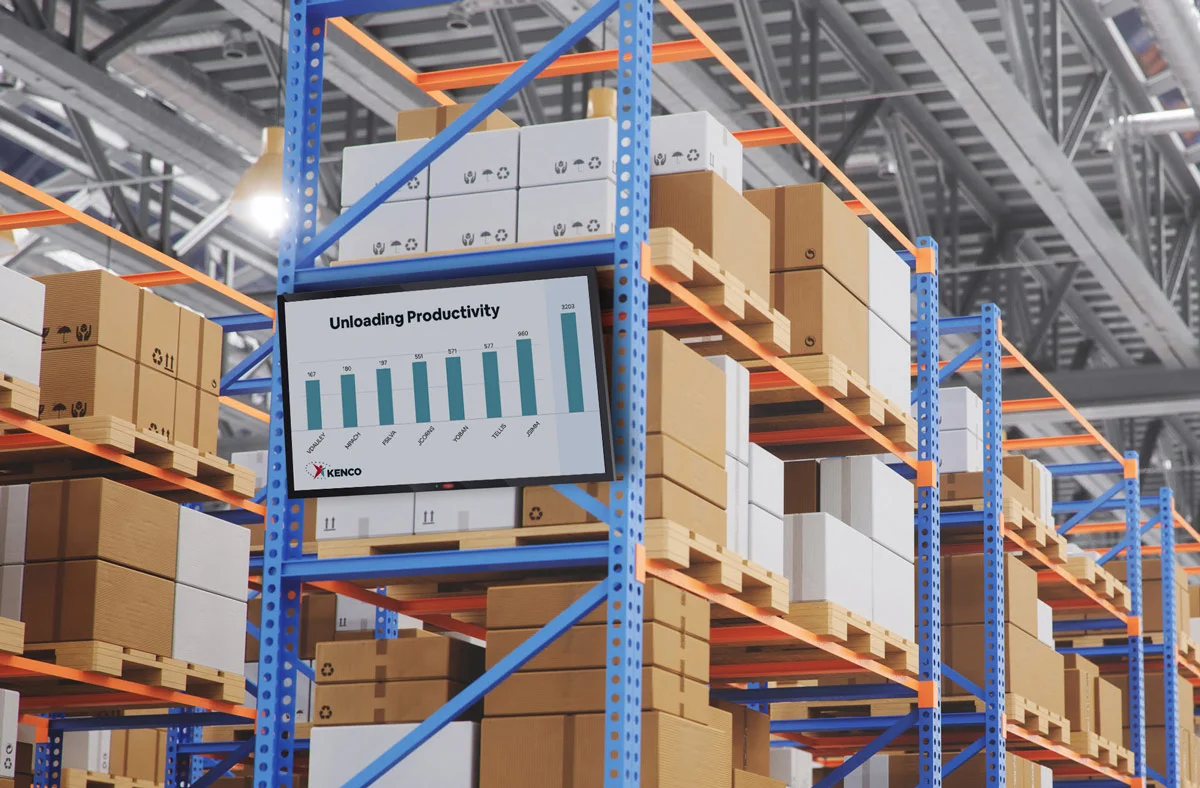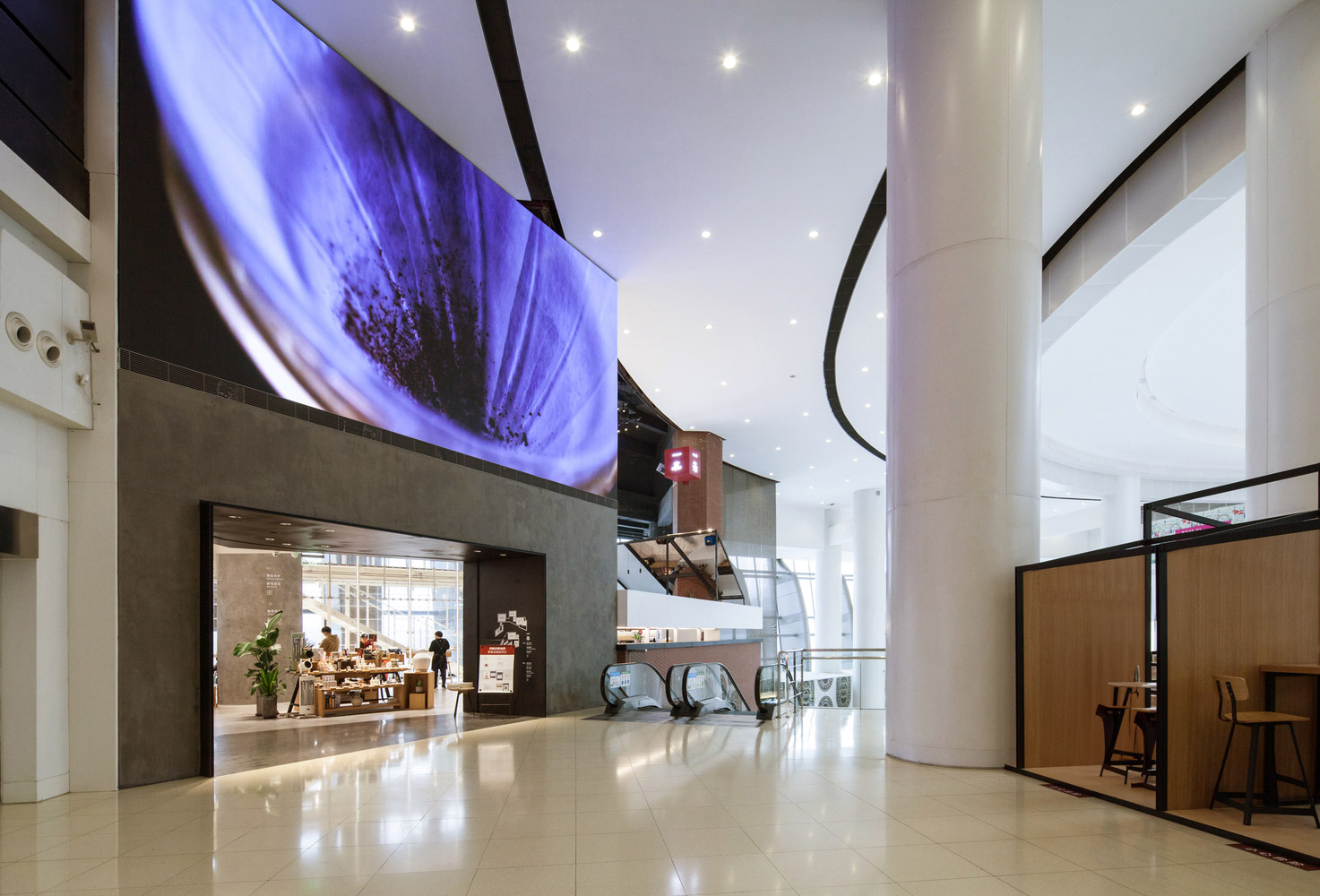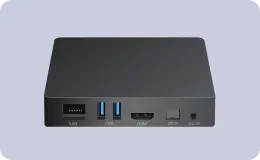ROI of Digital Signage in Higher Education
WRITTEN BY: TelemetryTV, 02-26-2025
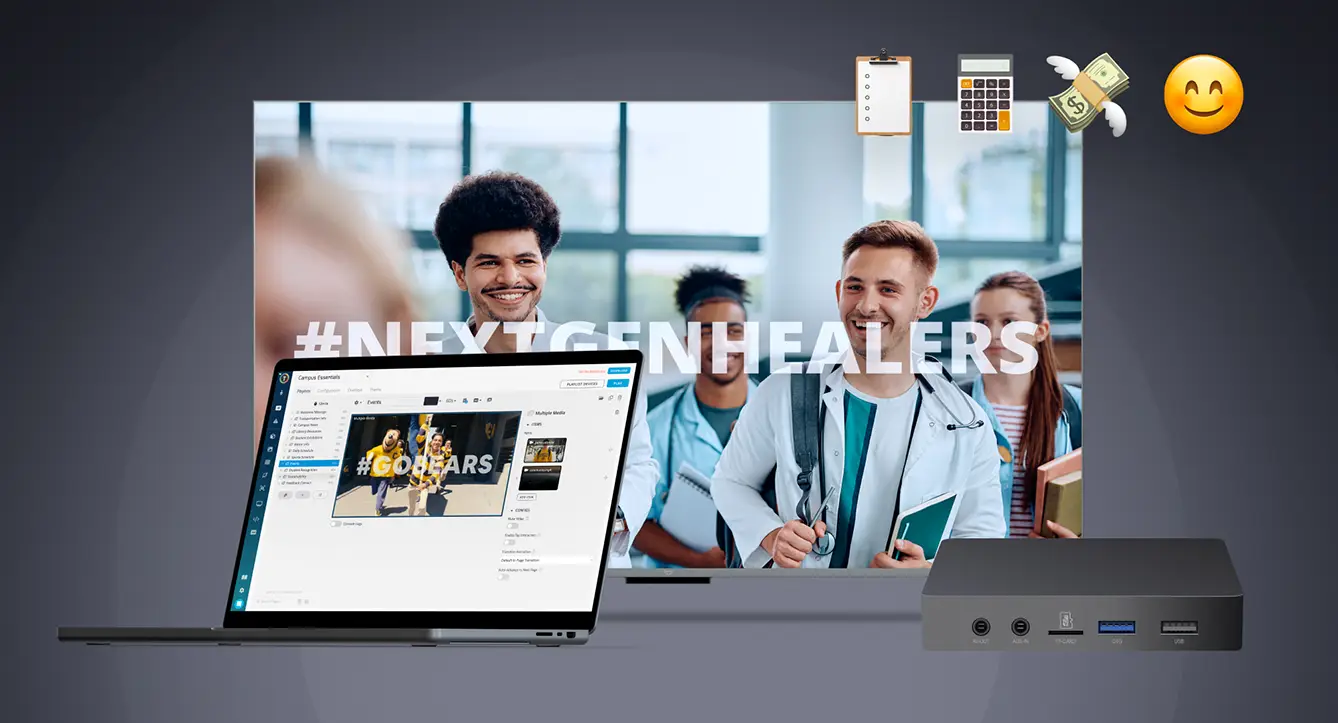
As universities in the United States and Canada grapple with budgetary pressure, many are turning to TelemetryTV’s digital signage software to modernize communications, cut printing costs, and create new revenue streams. What once seemed optional is now proving to deliver rapid financial returns, thanks to reduced overhead and boosted engagement.
This article explores the costs of implementing digital signage, the revenue opportunities it unlocks, and how institutions such as Stanford School of Medicine and UC Berkeley use TelemetryTV to recoup their investments quickly. While printing reductions and labor efficiencies often justify the expense, universities also discover opportunities for third-party ads, internal program promotions, and improved student retention.
The Costs of Campus Digital Signage
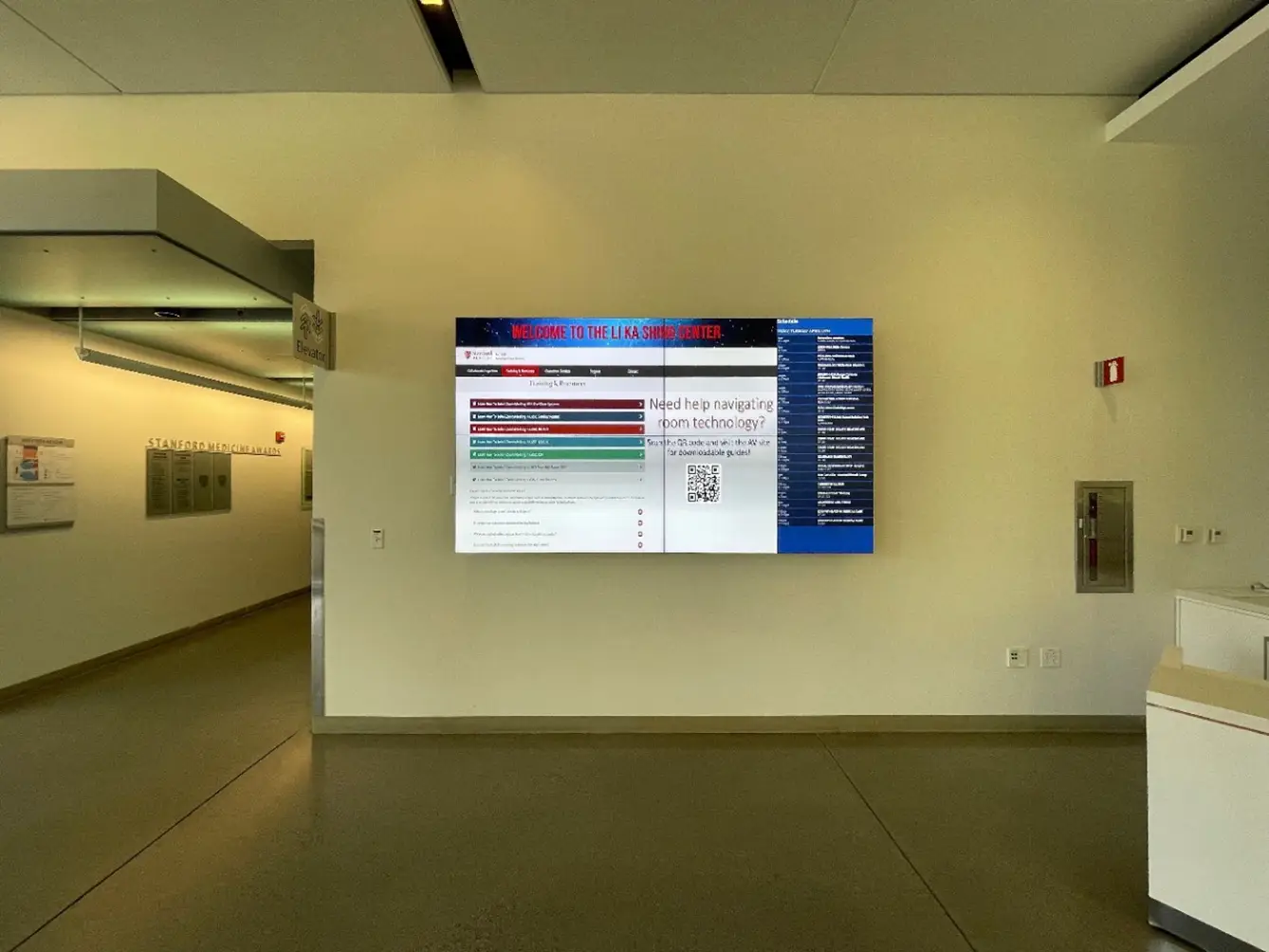 Digital Signage Powered by TelemetryTV. Source: Stanford Medicine
Digital Signage Powered by TelemetryTV. Source: Stanford Medicine
A digital signage network involves displays, media players, and an enterprise-grade content management system (CMS). Selecting robust hardware and software can significantly reduce maintenance and total cost of ownership.
Hardware: Screens and Media Players
Commercial-grade displays outlast consumer TVs in 24/7 operations. Each screen generally requires a media player, and TelemetryTV’s TelemetryOS Box stands out by powering multiple screens from one unit. Campuses report fewer failures and reduced IT travel, leading to lower support costs.
Software and Licensing
Cloud-based systems eliminate on-premises servers. TelemetryTV’s digital signage software centralizes scheduling, security updates, and power management. Schools can remotely update displays, perform reboots, and turn screens off during low-traffic hours, saving electricity.
Installation and Maintenance
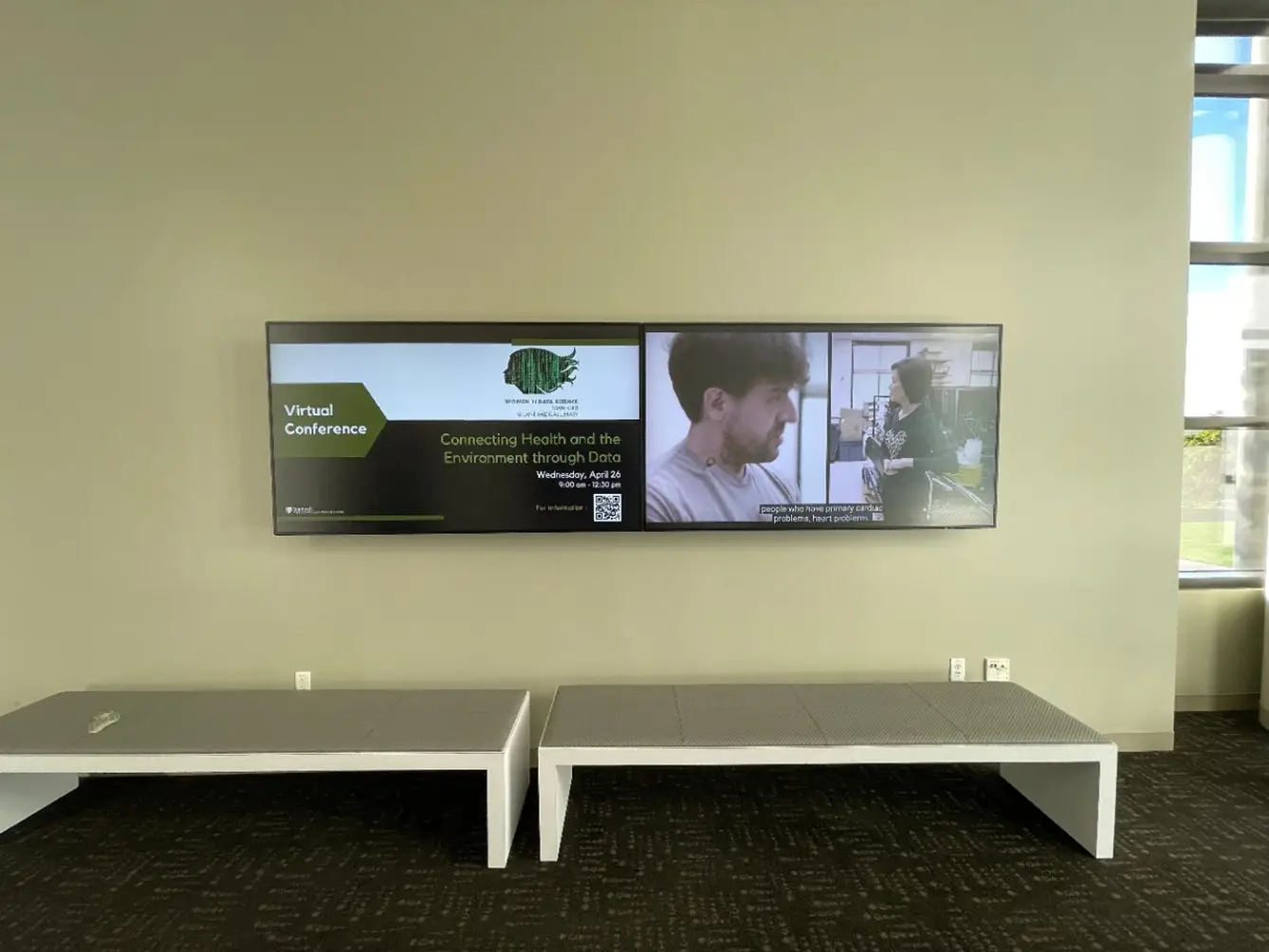 Digital Signage Powered by TelemetryTV. Source: Stanford Medicine
Digital Signage Powered by TelemetryTV. Source: Stanford Medicine
Mounting screens and running network cables can be one-time expenses. Ongoing costs involve periodic hardware checks, content updates, and occasional repairs. Studies show organizations typically spend 10–20% of initial installation costs each year on upkeep. However, remote monitoring further reduces maintenance needs.
Where the ROI Comes From
Digital signage can offset costs and deliver tangible returns by combining revenue from ads, savings in printing, and gains in student engagement.
1. Advertising and Internal Promotions
Third-party ads in high-traffic areas can earn enough to cover lease payments. Some of our clients from Higher Education charge local businesses thousands of dollars annually for display space. Meanwhile, universities also use signage to promote their own master’s programs or certification courses, attracting new enrollments that boost tuition revenue.
2. Efficiency Gains and Cost Savings
By digitizing campus announcements, institutions cut printing, paper, and distribution costs. Staff can upload or schedule content from a single dashboard rather than plastering posters across multiple buildings. Interactive kiosks further reduce the need for staffed information desks.
Screen power scheduling can lower electricity consumption by up to 40%. Cloud updates reduce travel time, so IT teams can troubleshoot or reboot devices from anywhere.
The following table summarizes some typical savings:
| Cost-Saving Area | Potential Impact | Example |
|---|---|---|
| Reduced Printing | Thousands saved on paper and ink | Elimination of most physical flyers |
| Less Manual Labor | Fewer staff hours posting notices | Remote updates via cloud CMS |
| Energy Management | Up to 40% power reduction | Scheduled on/off during off-hours |
3. Student Engagement and Retention
Relevant announcements on digital screens ensure deadlines, events, and campus services reach students promptly. Even a modest increase in retention has large financial implications, since each returning student preserves tuition and public funding. Digital signage also supports emergency alerts and wayfinding, improving overall campus experience.
TelemetryTV: A Competitive Edge
While multiple providers exist, TelemetryTV distinguishes itself through integrated hardware, cloud management, and reliable performance. Key features include:
• TelemetryOS Box: A dedicated media player that can power up to three screens, cutting hardware and licensing costs.
• Remote Monitoring: IT staff can reboot, update, or troubleshoot displays without on-site visits.
• Power Scheduling: Automates screen shutdown to conserve energy.
• Enterprise Security: Frequent updates and solid encryption, critical for institutions handling sensitive data.
These capabilities align with best practices in higher ed, where administrators demand minimal downtime and proven ROI for tech investments.
Real-World Campus Deployments
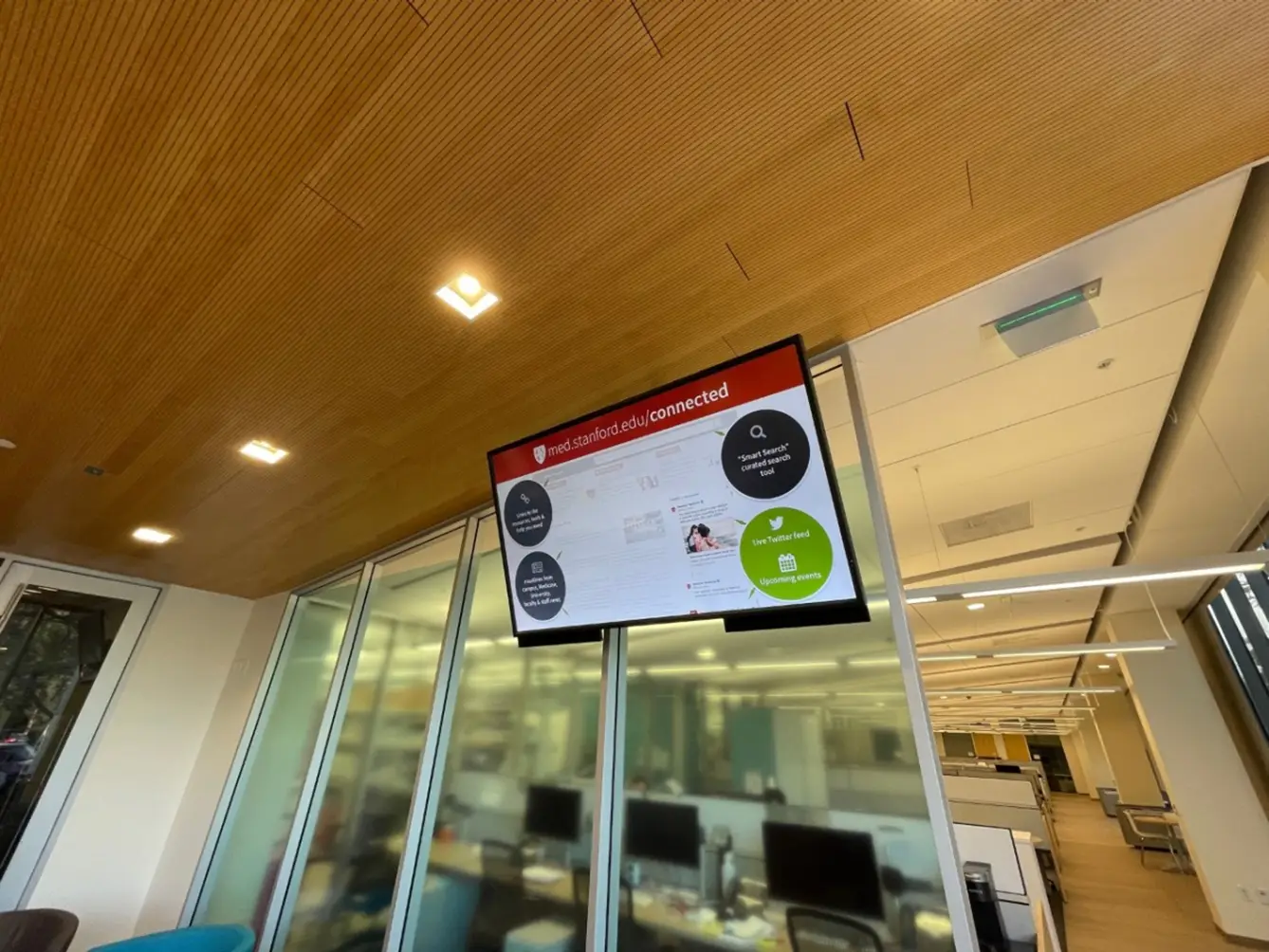 Digital Signage Powered by TelemetryTV. Source: Stanford Medicine
Digital Signage Powered by TelemetryTV. Source: Stanford Medicine
Several universities demonstrate how cloud-based signage, particularly from TelemetryTV, enhances campus communications while offsetting costs.
Stanford School of Medicine
Stanford needed a unified system to reach 7,000 students across 35 departments. TelemetryTV replaced disjointed bulletin boards, reducing paper usage and streamlining event promotion. Real-time shuttle schedules displayed on lobby screens saved valuable staff time and minimized student wait times.
University of Victoria (UVic)
UVic’s Digicaster program uses TelemetryTV under a shared license structure. Departments purchase their own screens but share a single CMS. This setup lowers software costs and offers standardized training and content templates. The result: swift updates, consistent branding, and fewer support tickets.
Calculating ROI: Key Factors
1. Total Cost of Ownership: Include hardware, software, and installation. Cloud-based solutions with power management keep TCO in check.
2. Revenue Potential: Modest advertising can offset ongoing expenses, especially in student centers and athletic facilities with heavy foot traffic.
3. Efficiency Savings: Fewer printed materials and reduced labor yield measurable cost reductions each year.
4. Student Engagement: Informed students persist at higher rates, safeguarding tuition revenue.
5. Reliability and Support: Systems with robust remote tools, such as TelemetryTV, minimize costly downtime.
Conclusion and Next Steps
Digital signage once seemed like a luxury. Today, it is a strategic asset that delivers immediate returns. From lowering labor and printing expenses to generating new income from ads, universities are seeing a clear payoff. With TelemetryTV’s digital signage software, hardware failures plummet, remote management becomes seamless, and energy usage drops—enhancing ROI.
Whether boosting retention through timely alerts or tapping into ad revenue, higher ed institutions gain a modern, dynamic communication channel that quickly justifies its cost. As exemplified by Stanford School of Medicine and UC Berkeley, a well-managed digital signage network can unite a campus, inform its community, and save real dollars year after year.
Elevate Campus ROI with Digital Signage
Cut costs, drive engagement, and explore new revenue streams with TelemetryTV’s digital signage software. Discover why top universities rely on our cloud-based solution.
Start for FreeVisual Communication. Everywhere.
Get started for free. No credit card required.
